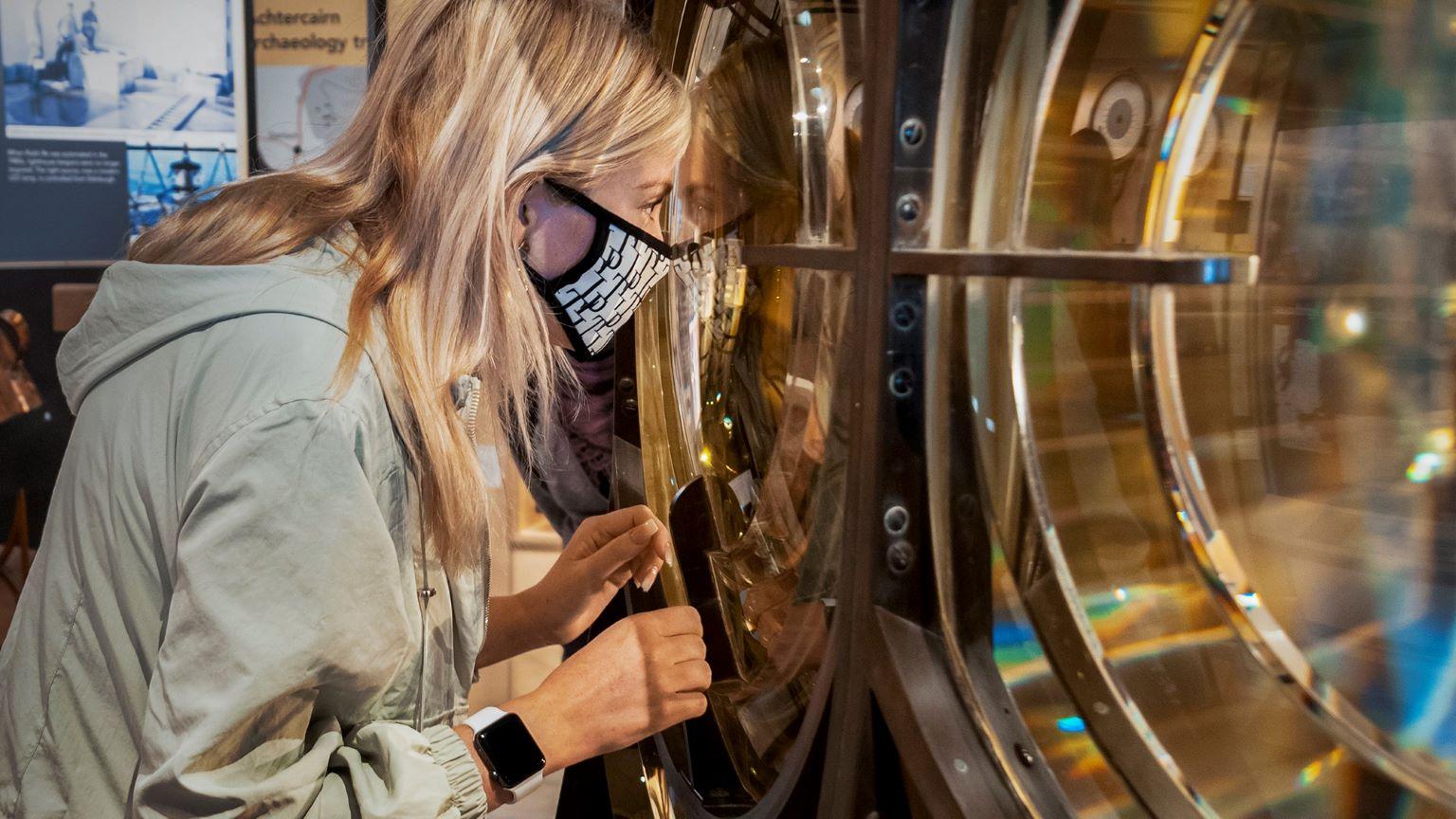Winners’ tales: How Gairloch Museum used sound to tell stories

Over the next few weeks we’re hearing from our Museum of the Year winners as they share their innovative work. Here, Gairloch Museum curator Karen Buchanan tells us how they used their sound archive and new recordings to bring history to life.
Here at Gairloch Museum we recently undertook a major redevelopment project, moving to a new building and renewing our displays. Collecting and curating oral history was a big part of the project, and training in the recording, documentation and interpretation of oral history was included in our project activity plan.
We wanted to open up our sound collection to our visitors within our galleries, rather than in a separate space. We knew we could use our oral histories to enrich our new displays – both by using our sound files as a research resource and by adding the medium of sound to the visitor experience.
We also decided to use the opportunity to collect new sound recordings. Initially these were mainly focused on the history of the former cold war bunker into which we were moving. However, other opportunities arose during the course of the project. These included a First World War centenary project supported by the National Lottery Heritage Fund and the serendipitous appointment of a filmmaker. And finally, we created new sound files from documents within our archive, using sound as an alternative way of presenting information.
Listening to the past
We have several listening posts in the museum and we’ve used a combination of techniques to populate them. In our war gallery we’ve created sound files from archive documents for interpretation purposes. We took a series of letters written home by three brothers from the local area during the First World War. These were recorded using local voices and form the content for this listening post.
Many visitors’ favourite object in our museum is our lighthouse lens. It came into the collection when Rubh Re, our local lighthouse, was automated in the 1980s. One of the new display themes in the museum focuses on the lives of the keepers and families who lived there, and we included a listening post on which we used recordings that were created especially for the redevelopment project. For example, we interviewed someone whose father had been a principal keeper at the lighthouse. The first-hand stories he tells are of great interest, especially the superb story of the family’s epic journey from Edinburgh to arrive at the lighthouse for the first time.
Opening up language
We are fortunate to have a wealth of recordings stretching back to the 1960s and collected by previous curators and Gaelic scholars. Our Gaelic sound archive had remained largely hidden until recently. We wanted to highlight the importance and beauty of the Gaelic language underpinning the cultural heritage of our area, so we constructed a Gaelic listening booth where visitors can immerse themselves in the vernacular Gairloch Gaelic from our archive collection.
There is a strong oral tradition in Gaelic culture and it felt right to bring the sounds out into the museum. The listening booth contains a range of types of recording; these include songs written by local bards, snippets of the social history of the area, such as how people used to prepare for Christmas and the New Year, and stories and anecdotes from our collection.
Links to sound recordings have been added throughout our displays. QR codes on interpretation panels connect to sound files from our own archive or to recordings on Tobar an Dulchais, the online Gaelic sound archive. One example is a local voice talking about her job gutting herring as a young woman.
Telling new stories
During the museum redevelopment we were approached for help by a filmmaker who was considering making a documentary film about the changes that happened to life in the Gairloch area after the Second World War. We decided to work together on the film. The filmmaker undertook interviews and these were used with visual footage and images from our archive to tell the story.
Our oral history recordings have served as a valuable research resource, informing the creation of displays and their interpretation. Our new building is a former anti-aircraft operations room turned nuclear bunker, and we used the plans for the construction of the building to construct a model of the original layout (see image). For some aspects of the interior of the model, we relied on recordings with former Royal Ordnance Corps members who had worked in the building and remembered how it was laid out; these recordings were useful to the volunteer model-makers for aspects of the detail.
Finally, we brought to life one of our best-known and rarest objects through sound: a flat-pack outdoor pulpit that sheltered the minister and bible during outdoor services. We have a beautiful recording of the 23rd psalm in our archives, sung by a local precentor well-known for his singing voice.
The singing of Gaelic psalms is a unique sound; visitors who have not heard it before are enchanted by it. Those who grew up attending Gaelic church services are transported back in time. The combination of rare artefact and unique sound enriches the visitor experience beyond measure.
Gairloch Museum is a winner of Art Fund Museum of the Year 2020. Learn more about our five brilliant winners.